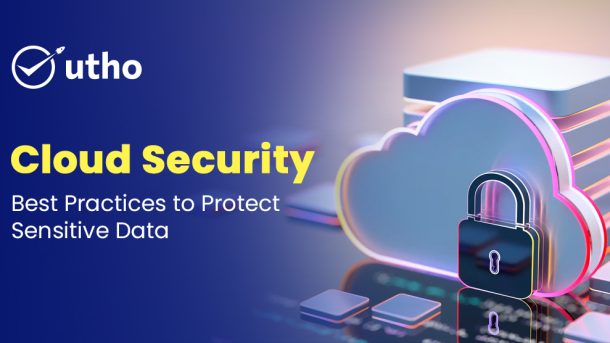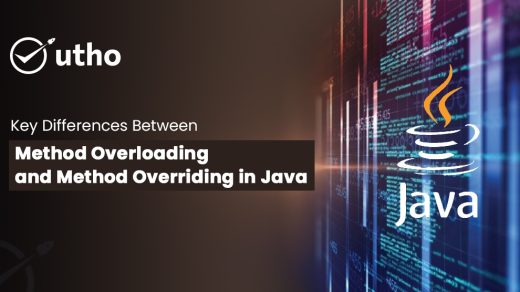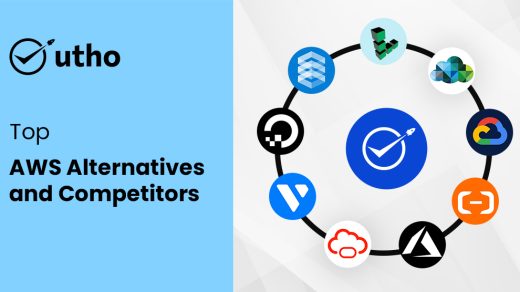Today's world is digital. Businesses rely heavily on cloud services. Ensuring strong security is critical. As organizations increasingly adopt cloud services, implementing effective cloud security best practices is essential. This article gives valuable information. It provides guidance on best practices for protecting your data in the cloud.
Let's look at the important steps to create a secure cloud environment. In this digital age, data breaches and cyber threats are common. Prioritizing cloud security is key. Cloud services are being adopted rapidly. Organizations must put in place measures to protect data. These measures are to stop unauthorized access, data breaches, and other risks.
Why is cloud security important?
Organizations increasingly use cloud platforms for their critical workloads. The platforms offer flexibility and efficiency. This is compared to traditional data centers.
As you start a digital transformation in the cloud, data security is a top concern for groups. Cloud security represents a shift from traditional security solutions and approaches. Also, knowing cloud security is crucial. Data breaches and malware attacks are more common in the cloud. Attack paths are always changing. By considering cloud security best practices. Organizations can use the right tools and best practices. They can use them to secure workloads in the cloud. This insight also helps organizations improve their security practices. They can do this as cloud adoption progresses.
Types of Cloud Security Solutions
More and more organizations use cloud services. Many security solutions have emerged to meet the cloud's unique challenges. Here is an overview of these solutions:
Cloud Postural Security Management (CSPM)
CSPM provides information about the configuration of cloud resources and continuously monitors them. It checks cloud resources against rules to ensure correctness. It detects any incorrect settings. This system ensures compliance through built-in and custom standards and frameworks. They automatically fix incompatible resources.
Cloud Workload Protection Platform (CWPP)
CWPP provides visibility for cloud workloads. It reduces risk for VMs, containers, and serverless operations without agents. It scans workloads for vulnerabilities, secrets, malware and protected settings. CWPP also helps find workload mismatches and vulnerabilities. It finds them during CI/CD pipelines. As a final layer of defense, CWPP uses a lightweight agent for real-time threat detection.
Cloud Infrastructure Rights Management (CIEM)
CIEM manages permissions in cloud deployments. It secures least-privilege deployments. It optimizes access and permissions across the environment. It analyzes the access rights of principals and resources. It detects leaks of secrets or credentials. These could compromise access to sensitive resources.
Kubernetes Security Management (KSPM)
KSPM automates the security and compliance of Kubernetes components. It does this by providing end-to-end visibility into containers, hosts, and clusters. It assesses risks related to vulnerabilities, misconfigurations, access rights, secrets, and networks. It matches these risks to give context and to prioritize. KSPM also enables left shift. It detects and prevents security issues in Kubernetes during development.
Data Positional Security Management (DSPM)
DSPM protects sensitive data in the cloud. It does this by identifying its location in storage systems and databases. It links sensitive data to cloud context and other risk factors. It helps us understand the setup, use, and movement of data. The DSPM can detect attacks on data. It lets us prioritize and prevent breaches.
Cloud Detection and Response (CDR)
CDR detects, investigates, and responds to threats. It does this by monitoring cloud activity and finding suspicious events. It detects threats in real-time. The system provides full visibility. It automatically matches threats in real-time signals, cloud activity, and audit logs. This lets it track attacker movements. This lets you react fast. It minimizes the impact of danger.
Cloud Security Best Practices
Maintain your configuration
Regularly check your cloud configuration for errors or weaknesses that could cause problems.
Control who gets access
Control who can access your cloud systems and what they can do.
Add additional layers of security
Enable multi-factor authentication (MFA) to provide users with more than just a password to log in.
Use security tools
Use your cloud provider's built-in security tools or deploy third-party options to keep an eye on potential threats.
Stick to the basics
Give users and apps only the permissions they absolutely need, and review them regularly to prevent excessive access.
Data protection
Encrypt your data in motion and at rest, and make sure your encryption keys are well protected.
Build security in
Build your cloud configuration with security in mind from the bottom up and automate security processes wherever possible.
Backup regularly
Always keep copies of your important cloud data and test regularly so you can restore them if necessary.
Train your team
Make sure everyone knows the basics of cloud security and is up to date on new threats and security measures.
Mixing
Consider using private and public clouds. Choose based on the sensitivity of your data and applications.
Core Principles of Cloud Security Architecture
A cloud security best practices must include tools, policies, and processes. They protect cloud resources from security threats. Here are its core principles:
Security by Design
Design cloud architecture with security controls that are resistant to security misconfigurations. For example, limit access to sensitive data in cloud containers. Also, prevent admins from opening access to the public Internet.
Visibility
Ensure visibility across multi-cloud and hybrid-cloud deployments. Traditional security solutions may not adequately protect these setups. Establish tools and processes for maintaining visibility throughout the organization's entire cloud infrastructure.
Unified Management
Provide unified management interfaces for cloud security solutions. Security teams are often understaffed and overworked. They should be able to manage many security solutions from a single interface.
Network Security
Implement robust network security measures. As per the shared responsibility model, organizations must secure traffic to and from cloud resources. They must also secure traffic between public cloud and on-premise networks. Network segmentation is crucial to limit lateral movement by attackers.
Agility
Ensure that security measures do not impede agility.
Automation
Leverage automation to swiftly provision and update security controls in the cloud. Automation can also help find and fix misconfigurations and other security gaps. It does so in real-time.
Compliance
Adhere to regulations and standards such as GDPR, CCPA, and PCI/DSS. Cloud providers offer compliance solutions. However, organizations may need third-party solutions. They need them to manage compliance across multiple cloud providers well.
What are the benefits of cloud security?
Enhanced visibility
Cloud environments have strong monitoring and logging. They let you closely watch and quickly find anomalies. This increased visibility enables proactive security measures and rapid response to potential threats.
Easy backup and recovery
Cloud services provide automatic backup and recovery. They ensure fast data recovery after data loss or system failure. This reliability supports business continuity, minimizes downtime, and improves overall operational efficiency.
Compliance
Many cloud providers follow strict security and industry standards. These standards help organizations easily meet regulations. This ensures data integrity and confidentiality. It also reduces the risk of non-compliance. That increases the trust of stakeholders.
Strong Data Encryption
Cloud providers use strong encryption to protect data. They use it both when the data is moving and when it's still. This protects critical data from unauthorized access and improves security.
Cost savings
using cloud services eliminates the need for investments and maintenance of local infrastructure. Models shared by businesses expand resources on demand, slashing IT expenses.
Advanced threat detection and response
Cloud security systems often have advanced threat detection and response capabilities. They use machine learning algorithms to find and stop security threats in real-time. Taking a proactive stance aids in averting potential risks before they escalate.
Challenges to cloud security
The cloud changes fast. It's due to constant innovation and evolving business requirements. This creates new obstacles for security experts.
Managing the complexity of multiple clouds
Organizations using services from multiple clouds. service providers have difficulty maintaining unified information security on different platforms.
Adapting to serverless architectures
The emergence of serverless computing requires a change in traditional information security methods. These dynamic environments lack fixed server infrastructure, leading to unique vulnerabilities.
Addressing container security
Containers, like Docker and Kubernetes, promote flexibility and scalability. But, they make it hard to isolate applications, track changes, and manage vulnerabilities.
Countering AI and ML Threats
AI and ML's rise brings new risks. For example, there will be attacks on AI systems and their data.
Mitigating Supply Chain Attacks
Recent events show the risk of software supply chain attacks. Malicious actors compromise software elements, causing widespread vulnerabilities.
Securing Cloud Storage settings
Basic misconfigurations often lead to data breaches rather than sophisticated attacks. It is hard to ensure the correct setup of each storage unit, database, or bucket in large cloud systems.
Improving Remote Work Security
The attack surface is growing fast. The shift to remote work sped up due to global events like the COVID-19 pandemic. Connecting to cloud resources securely is now essential. This must work from different places and devices.
Future trends of cloud security
Security in the cloud was once an IT problem. Now, it's a top goal for all business leaders in the era of cloud services. The path of cloud security intersects with future trends. So, it's more important to invest in worker training. Or, to partner with cloud providers (CSP). New trends in cloud security include handling confidential data. They also involve combining DevSecOps with cloud pipelines. They rely on large language models (LLM) in cloud services.
Confidential data processing
Processing confidential data is a new trend in cloud security. While processing data, encryption is necessary, not just while at rest or in transit. Cloud providers achieve this using Trusted Execution Environments (TEEs). TEEs create isolated enclaves on the CPU. Sensitive operations can take place there securely. This approach improves cloud security. It protects data from breaches and unauthorized access.
Integrate DevSecOps into the Cloud
Integrate DevSecOps transforms cloud application development by building security throughout the development lifecycle. This brings together developers, IT operations, and security teams. It lets organizations improve application security without slowing deployment. This integration includes practices. They are left migration protection, automated testing, and cross-team collaboration. These practices smoothly incorporate security into the development process.
Dependency on Large Language Models (LLM)
We can use advanced natural language processing. It lets us add Large Language Models (LLM) to cloud services. The models analyze user queries. They provide contextual responses. This enables more natural interactions with cloud interfaces. Cloud solutions with LLMs provide smart support. They help with tasks like troubleshooting, optimization, and setup. They improve user experience and simplify cloud operations. And, they need little human work.
Wrapping Up
In today's digital world, it's crucial to keep sensitive data safe with strong cloud security. Utho is a top choice for this, providing advanced solutions to tackle changing cyber threats. By following these best practices and using Utho's expertise, businesses can protect their cloud platforms from potential breaches. Stay alert, be quick to adapt to new threats, and keep your cloud security up to date with Utho's reliable solutions to stay ahead of hackers.
As your trusted cloud service provider, we ensure state-of-the-art data security to protect your data. Our network is fortified with DDOS protection to protect against malicious attacks. Also, users can create security groups with each server. These act as an added firewall to improve protection. We keep data security first. We often share updated security measures. They inform our users about best practices to protect their data. Also, our Virtual Private Cloud (VPC) technology enables private communication. It allows servers to talk to each other. This improves privacy and security.




